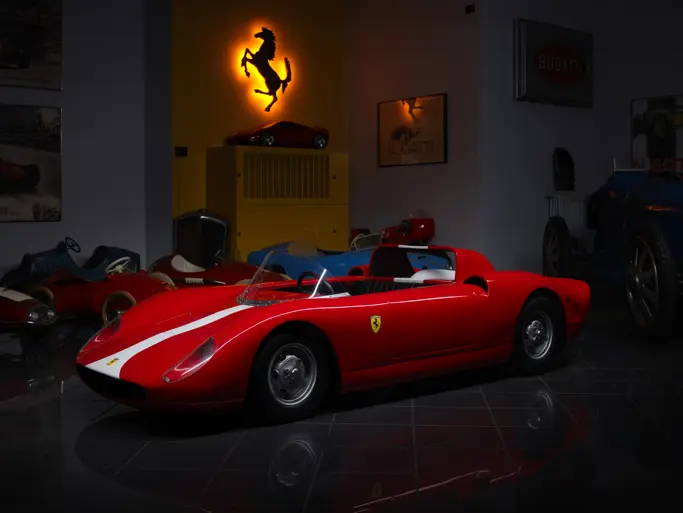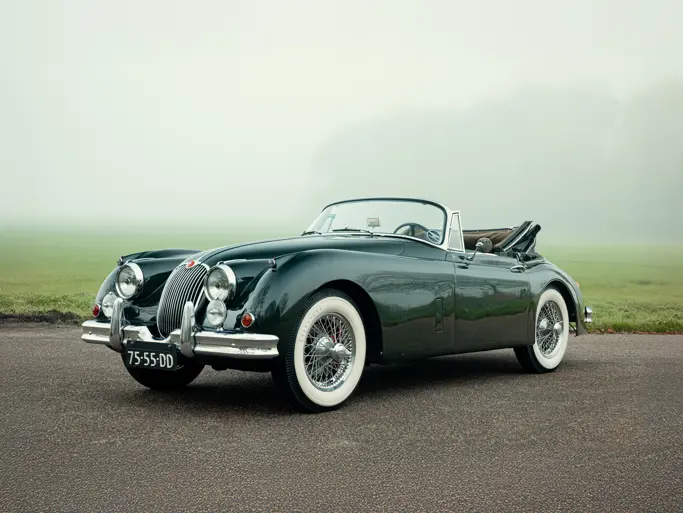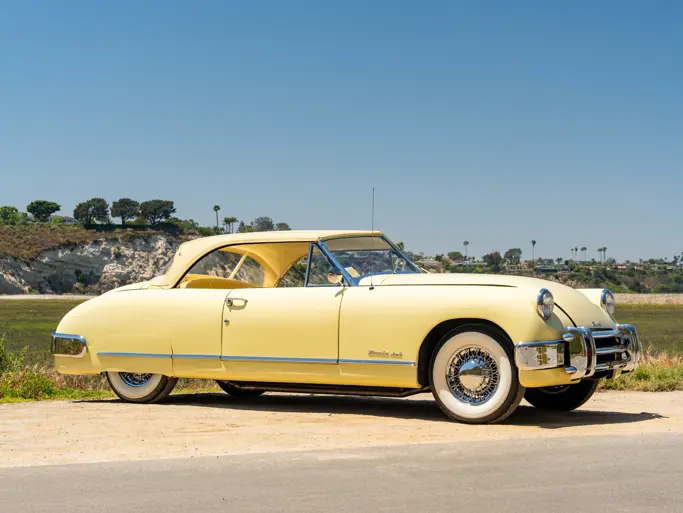 | Fort Lauderdale, Florida
| Fort Lauderdale, Florida
The newly designed Corvette arrived with the 1956 model. It has gone on to become an iconic model to enthusiasts and historians alike. Restyled with a more flowing body, the car was given concave side coves finished in contrasting color. Roll-up side windows provided all-weather comfort and required exterior door handles. Engines were all V-8s. Development of the Corvette continued under engineer Zora Arkus-Duntov. The 283 cubic inch V-8 was adopted in 1957, making 283-hp with optional fuel injection, and a four-speed transmission was made available. By 1959 there were power options up to 290-hp and sales topped 10,000.
By 1961 the Corvette had evolved into a very credible sports car with a multitude of SCCA victories to its credit, as well as an impressive finish of eighth overall (first in class) at the 1960 24 Hours of Le Mans. Starting with this classic sports car design was a fantastic starting point to give it tasteful new styling touches, while keeping the car clean and uncluttered. Corvette engineers wanted to make it clear to all that from this point forward, the newest Corvette was meant to be driven, no matter the occasion – black tie or tennis shoes – the Corvette is appropriate.
Styling was carefully updated under GM design chief Bill Mitchell with a subtle new grille design, while the new rear end treatment foreshadowed the upcoming Sting-Ray with a neat ducktail design incorporating four cylindrical taillights. In addition, the growing list of standard equipment now included a tachometer, seatbelts, sunvisors, dual exhaust, carpet, electric clock, outside rearview mirror, windshield washers, courtesy light, temperature-controlled radiator fan, parking brake warning light and an aluminum radiator.
In addition to the standards, this restored Corvette is equipped with the very desirable 283-cid V-8 engine that is fed by twin four-barrel carburetors and is paired up with the optional four-speed manual transmission. The car is presented in two-tone; this was an option in the 1961 model year for the final time. Only 3,368 Corvettes are reported as having contrasting coves from the factory. Of these, just 429 had the Tuxedo Black and Sateen Silver combination, such as seen on this car. The soft-top is black vinyl and the interior is richly appointed with red. Full factory wheel covers with two-eared spinners, optional whitewall tires and optional Wonderbar radio are also fine attributes for this car. Also accompanying the Corvette are a coil, valve covers and tonneau cover.
In 1961, Chevrolet built 10,939 Corvettes for true driving enthusiasts. They remain highly coveted by those who enjoy their sports cars with a high performance American V-8 engine under the hood and the never-ending sense of American style associated with the Corvette nameplate.





